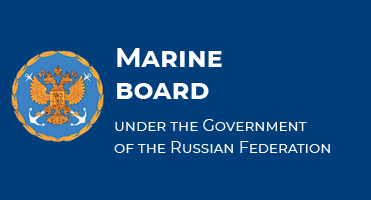Growth in the transshipment of dry cargo in the seaports of Russia in December 2020 continues, according to the analytics of FSUE "Rosmorport"

The growth in the transshipment of dry cargo in the seaports of Russia in December 2020 continued, according to the analytics of FSUE "Rosmorport". Specifically, dry cargo turnover increased by 11.8% compared to the results of December 2019, to 35.67 million tons. This made it possible to reduce the lag in cargo turnover in general in December 2020 to December 2019 against the background of the continuing decline in the transshipment of liquid cargo (by 13%, to 34.5 million tons).
At the same time, in December 2020, the largest growth in dry cargo turnover was shown by the seaports of the Baltic basin (23.5%), the Far Eastern basin (12.7%), and the Azov-Black Sea basin (4.4%).
In particular, the increase in cargo turnover for December 2020 year compared to December 2019 year, mainly due to dry cargo, was recorded in the seaports of Ust-Luga – 7.8%, Taman – 33%, Big Port Saint Petersburg – 9.9%, Vysotsk – 24.9%, Shakhtersk – 83.2%, Nakhodka – 7.1%, Vladivostok – 6.8%, Posyet – 36.3%.
It is worth noting that the transshipment of goods in the seaports of Russia in December 2020 increased by 2% compared to November 2020.
The volume indicators of the serviced vessels decreased in December 2020 to December 2019 by 4.5%, to 149.7 million GT. At the same time, transportation by vessels abroad decreased by 5%, while transportation by cabotage vessels decreased by 1.4%. The decrease was due to a decrease in the transshipment of bulk cargo in the seaports of Novorossiysk, Ust-Luga, Primorsk, Murmansk and due to a decrease in the number of vessels entering the seaports of Vladivostok and Kaliningrad for bunkering.
In December 2020, the number of pilotages against the background of decrease in vessel entries decreased by 13% or to 13.97 thousand pilotages.
In general, in accordance with the results of 2020, the cargo turnover of Russian seaports decreased by 2.3% or to 820.77 million tons against the background of bulk cargo transshipment (by 10.4% or to 416.05 million tons due to a decrease in oil production under the OPEC deal), as well as a decrease in cargo transshipment on ferries and rolled cargo by 12%. The volume of dry cargo transshipment at an annual rate increased by 7.6% or to 404.72 million tons.
For example, in 2020, the transshipment of bulk cargo in the seaports of Russia increased by 7.9% (due to an increase in transshipment of coal and coke by 7.1% and by 47.8% of ore), by 26.1% of bulk cargo (mainly due to an increase in grain handling by 30.3%), by 0.5% of general cargo, as well as increased by 2.1% in container turnover.
Among liquid cargoes, there are increased the transshipment of food cargoes (7.7%) and chemical cargoes (0.3%), but this did not prevent the decrease due to a drop in oil transshipment by almost 15% and oil products by 4.9%.
The key performance indicators of serviced vessels in 2020 decreased by 9.3% compared to 2019 or to 1.8 billion GT. At the same time, transportation by vessels abroad decreased by 12.2%, while transportation by cabotage vessels increased by 4%.
This is due to a decrease in the volume of transshipment of liquid cargo (oil and oil products) in the seaports of Novorossiysk, Primorsk, Ust-Luga, Murmansk, Vysotsk, Taman, Vanino, De-Kastri, and dry cargo (coal, coke) in the seaports of Kandalaksha, Vyborg, Azov. The results of 2020 were also influenced by the lack of calls of cruise ships at the seaports of Passenger port of St. Petersburg, Korsakov, Petropavlovsk-Kamchatsky and a decrease in the number of ships calling at the seaports of Nakhodka, Vladivostok, Vostochny, and Kaliningrad for bunkering purposes. At the same time, the growth of shipments by coastal navigation vessels is due to an increase in the transshipment of grain cargo in the seaports of Rostov-on-Don, Azov, and the Caucasus.
The number of pilotages implemented by FSUE Rosmorport in 2020 decreased by 9% or to 174.85 thousand operations compared to the same period of 2019 due to a decrease in ship entries amid the pandemic.
But at the same time, there was an increase in pilotages in the Saimensky Canal (+ 24%), in the seaports of Arkhangelsk (+ 3%), Astrakhan (+ 12%), Olya (+ 23%), Novorossiysk (+ 11%), Eysk (+ 10%), Tuapse (+ 12%), Zarubino (+ 19%), Sovetskaya Gavan (+ 34%), Nikolaevsk-on-Amur (+ 59%), Moskalvo (+ 100%), Anadyr (+ 22%), Feodosia (+ 32%), as well as in Azov Basin (+ 2%), Makhachkala (+ 14%) and Petropavlovsk (+ 17%) branches.












